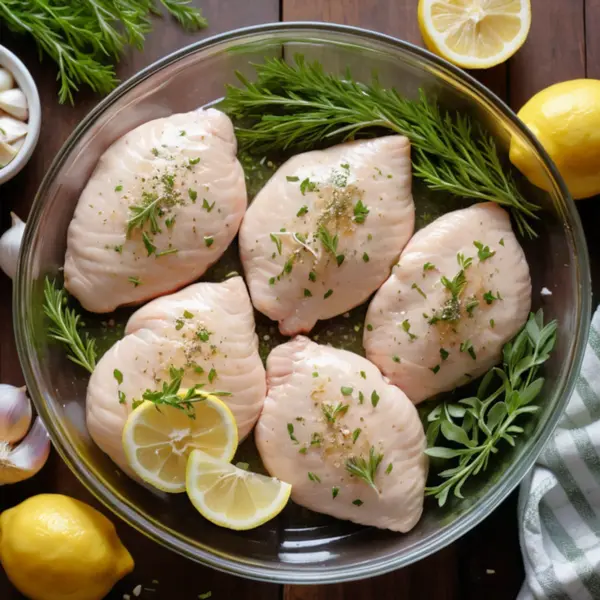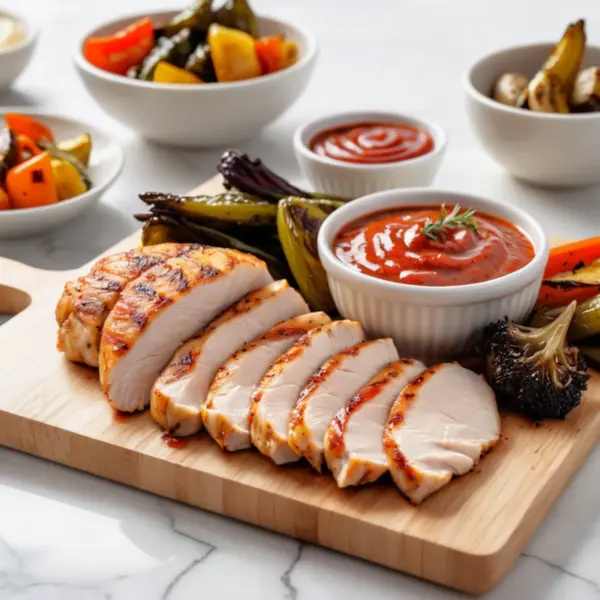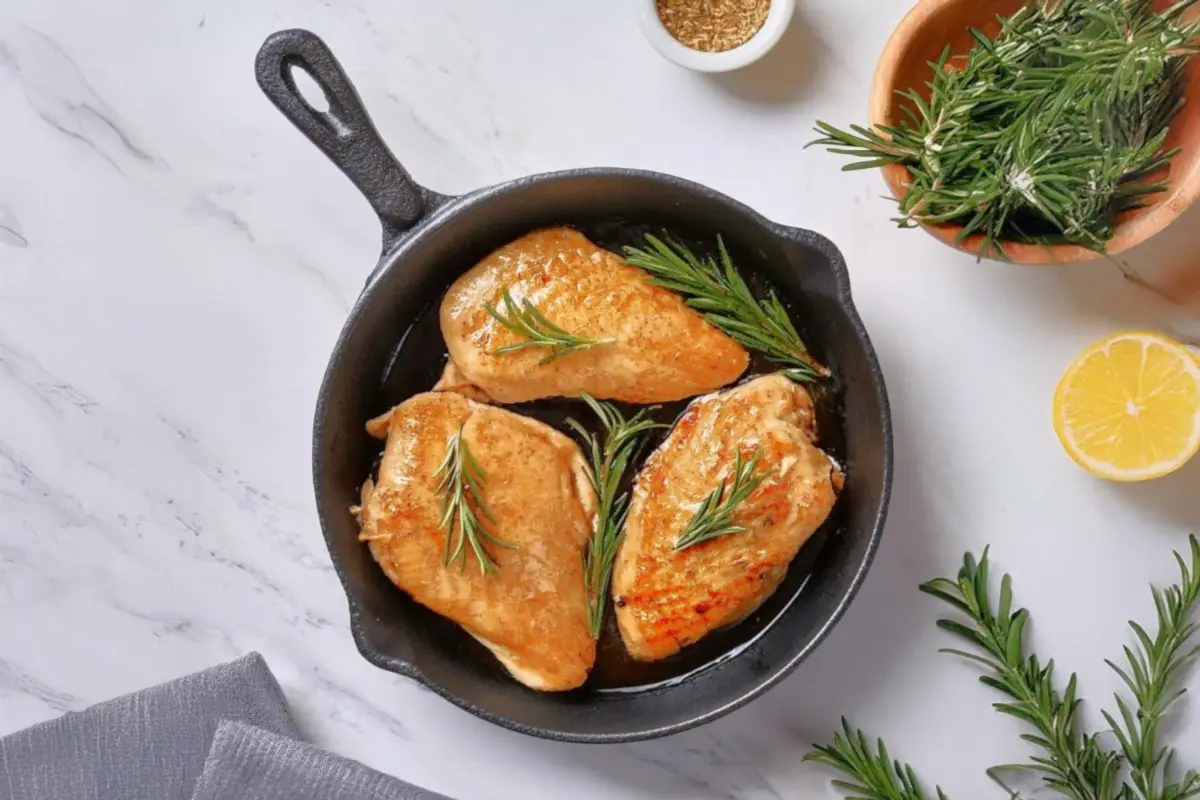Introduction :
Many home cooks often ask, what is the secret to making chicken tender? The answer lies in using the right techniques to ensure the meat remains soft, juicy, and flavorful. Cooking chicken properly, whether through marination, slow cooking, or using the correct temperature, helps prevent dryness and keeps it tender. By understanding how different methods affect texture, anyone can achieve perfectly cooked chicken every time.
This guide will explore everything about achieving the best texture, from selecting the right cuts to using marinades and cooking techniques. Whether baking, frying, or grilling, following these tips will help keep chicken tender and delicious.
What Is the Secret to Making Chicken Tender? Understanding Key Factors
Cooking chicken properly can make the difference between a tough, dry meal and a tender, juicy dish. The secret to making chicken tender lies in understanding how heat, moisture, and preparation techniques affect its texture. By learning how chicken reacts to different cooking methods, anyone can achieve a softer, more flavorful result.
Why Does Chicken Become Dry and Tough?
One of the most common mistakes when cooking chicken is overcooking it. When chicken is exposed to high heat for too long, the proteins contract too much, forcing moisture out. This results in a dry and rubbery texture. Cooking chicken at the correct temperature is essential to keeping it soft and juicy.
Another reason chicken turns out tough is choosing the wrong cut. Chicken breast, which is leaner, tends to dry out faster than fattier cuts like thighs. Since fat helps retain moisture, chicken thighs often stay more tender even if cooked a little longer. Using the right cooking technique for each cut of chicken is important to maintain its natural texture.
How Muscle Fibers Affect Chicken Tenderness
The texture of chicken depends largely on its muscle fibers. When chicken is cooked, the fibers contract, affecting how tender or chewy it feels. Cutting chicken against the grain shortens these fibers, making the meat easier to chew. This simple technique can make a big difference in tenderness.
Marinating chicken before cooking also helps loosen muscle fibers. Acidic ingredients like lemon juice, vinegar, or buttermilk help break down proteins, making the meat softer. Enzymes found in ingredients like pineapple or papaya also help tenderize the meat naturally.
The Role of Fat and Moisture in Keeping Chicken Tender
Fat plays an important role in keeping chicken tender. Cuts with more fat, such as chicken thighs, retain moisture better than leaner cuts like chicken breast. Cooking methods that help preserve moisture, such as slow cooking, steaming, or baking with foil, help prevent the chicken from drying out.
Another way to keep chicken tender is by using a small amount of fat while cooking. Adding butter or olive oil while pan-searing helps lock in moisture and create a richer flavor.
Importance of Resting Chicken After Cooking
One step that is often overlooked is letting the chicken rest before cutting into it. When chicken comes off the heat, its juices need time to redistribute throughout the meat. If sliced too soon, the juices escape, leaving the meat dry. Allowing chicken to rest for at least five minutes ensures that it remains juicy.
By understanding how different factors affect chicken’s texture, it becomes easier to cook it perfectly every time. Choosing the right cut, marinating properly, and using the best cooking techniques all contribute to a tender and flavorful meal.
What Is the Secret to Making Chicken Tender? Marination and Brining Techniques

Why Marination Helps Keep Chicken Tender
Marinating chicken before cooking helps improve its texture and flavor. It allows moisture to penetrate the meat, preventing it from drying out during cooking. Using the right ingredients in a marinade ensures that the chicken remains soft and juicy.
Best Ingredients for a Chicken Tenderizing Marinade
The ingredients used in a marinade determine how tender the chicken will be. Some of the best ingredients include:
- Acidic liquids like lemon juice, vinegar, or buttermilk break down proteins, making the meat more tender.
- Enzymatic ingredients like pineapple or papaya contain natural enzymes that soften muscle fibers.
- Dairy products such as yogurt and buttermilk coat the chicken, keeping it moist.
How Brining Can Improve Chicken Tenderness
Brining is another great method to keep chicken tender. A saltwater brine allows the meat to absorb liquid, preventing it from drying out. Adding sugar, garlic, and herbs enhances the flavor.
A basic brine recipe includes:
- Four cups of water
- One-fourth cup of salt
- Two tablespoons of sugar
- One teaspoon of garlic powder
Soaking chicken in a brine solution for a few hours before cooking results in juicy, flavorful meat.
Cooking Methods to Keep Chicken Tender
Cooking chicken the right way plays a big role in keeping it juicy and tender. Using the correct temperature, cooking time, and technique can prevent dryness and ensure that the chicken remains soft and flavorful. Whether baking, frying, or slow-cooking, choosing the best method is key to achieving perfect texture.
Best Cooking Temperatures
One of the most important factors in making chicken tender is cooking it at the right temperature. Overcooking leads to dry and tough meat, while undercooking results in an unsafe meal. The ideal internal temperature for cooked chicken is 165°F (74°C). Using a meat thermometer helps ensure the chicken is fully cooked without being overdone.
Low-Heat Cooking for Better Texture
Cooking chicken at a lower temperature over a longer period helps keep it tender. This method allows the proteins in the meat to break down slowly, preventing them from tightening too much. Some of the best low-heat cooking methods include:
- Slow Cooking: Cooking chicken in a slow cooker at low heat for several hours helps retain moisture. Adding broth or sauce enhances tenderness.
- Sous Vide Cooking: This method involves sealing chicken in a bag and cooking it in a water bath at a precise temperature. It ensures even cooking and maximum juiciness.
- Baking with Foil: Wrapping chicken in foil before baking traps steam, keeping the meat moist and tender.
Why High Heat Can Work
While low heat is great for retaining moisture, high heat can also work well when used correctly. Searing chicken at a high temperature before finishing it in a lower heat setting helps lock in juices. Some effective high-heat methods include:
- Searing and Roasting: Quickly searing chicken in a pan before transferring it to the oven creates a crispy outer layer while keeping the inside juicy.
- Grilling with Marinade: Cooking chicken on a grill over high heat works well when it has been marinated beforehand. The marinade prevents the meat from drying out.
- Stir-Frying: Cutting chicken into small pieces and cooking it over high heat for a short time helps preserve moisture.
Resting the Chicken After Cooking
Many people make the mistake of cutting into chicken right after cooking. However, letting it rest for 5 to 10 minutes before slicing allows the juices to redistribute. This simple step helps keep the meat tender and prevents it from drying out.
Cooking Methods to Avoid
Certain cooking methods make chicken tough if not done properly. Boiling chicken for too long can strip it of flavor and moisture. Microwaving cooked chicken often dries it out and makes it rubbery. Using too little oil in pan-frying can also cause dryness.
Step-by-Step Recipe for Tender Chicken
Cooking chicken the right way ensures that it stays juicy and flavorful. Using proper marination, cooking techniques, and the right temperature makes all the difference. This recipe focuses on creating soft, tender chicken by using a buttermilk marinade and a gentle cooking method.
Ingredients
- Two boneless chicken breasts
- One cup of buttermilk
- One tablespoon of lemon juice
- Two cloves of garlic, minced
- One teaspoon of salt
- Half a teaspoon of black pepper
- One teaspoon of paprika
- Two tablespoons of olive oil
Step-by-Step Cooking Instructions
1. Marinate the Chicken
Marinating helps break down muscle fibers, making the chicken softer. In a large bowl, mix buttermilk, lemon juice, minced garlic, salt, black pepper, and paprika. Submerge the chicken breasts in the mixture, ensuring they are fully coated. Cover the bowl and refrigerate for at least two hours, or for best results, leave it overnight.
2. Preheat the Oven
Before cooking, preheat the oven to 375°F (190°C). While waiting, remove the chicken from the marinade and let the excess liquid drip off. Pat the chicken dry slightly to help it develop a better crust when cooked.
3. Sear the Chicken
Heat a pan over medium heat and add the olive oil. Once the oil is hot, place the chicken breasts in the pan. Sear for two minutes on each side until a golden-brown crust forms. This step helps lock in moisture and creates a flavorful outer layer.
4. Bake the Chicken
Transfer the seared chicken to a baking dish and place it in the oven. Bake for 15 minutes, or until the internal temperature reaches 165°F (74°C). Using a meat thermometer ensures that the chicken is fully cooked without being overdone.
5. Rest Before Slicing
Once cooked, remove the chicken from the oven and let it rest for five to ten minutes before slicing. Resting allows the juices to redistribute, keeping the chicken moist and tender. Cutting too soon will cause the juices to escape, resulting in dry meat.
Nutritional Information (per 100g)
| Nutrient | Amount |
|---|---|
| Calories | 220 kcal |
| Protein | 25 g |
| Carbohydrates | 3 g |
| Fat | 10 g |
| Fiber | 0 g |
| Sodium | 300 mg |
Serving Suggestions
This tender chicken pairs well with roasted vegetables, quinoa, or a fresh salad. It can also be sliced and added to wraps or sandwiches for a healthy meal.
FAQs About Tender Chicken

Many people wonder, what is the secret to making chicken tender? Cooking chicken properly is key to keeping it juicy and flavorful. Using the right marination, cooking techniques, and resting time ensures that the chicken remains soft and moist. Below are answers to common questions that will help improve the texture and taste of cooked chicken.
What Is the Secret to Making Chicken Tender?
One of the most important factors in making chicken tender is marination. Soaking the chicken in buttermilk, yogurt, or citrus-based marinades helps break down proteins, making the meat softer. Cooking chicken at the right temperature and allowing it to rest after cooking also ensures it remains juicy. Using a thermometer to check the internal temperature prevents overcooking.
Does Pounding Chicken Help With Tenderness?
Yes, pounding chicken is a great way to improve tenderness. Flattening the meat helps break down muscle fibers, making the texture softer and ensuring even cooking. This method is especially useful for chicken breasts, which tend to cook unevenly.
Can You Over-Marinate Chicken?
While marinating enhances tenderness, leaving chicken in an acidic marinade for too long can negatively affect texture. When marinated for too many hours, acidic ingredients like lemon juice or vinegar can break down proteins too much, resulting in mushy meat. For best results, marinate for two to four hours or use a dairy-based marinade overnight.
What Is the Secret to Making Chicken Tender Without a Marinade?
If marinating is not an option, using proper cooking techniques helps maintain tenderness. Slow cooking, steaming, and baking with foil help retain moisture. Cooking at a lower heat for a longer time prevents proteins from tightening too quickly, keeping the meat juicy.
Why Does My Chicken Turn Out Dry?
One of the main reasons chicken turns out dry is overcooking. High heat causes moisture loss, leading to tough meat. Cooking chicken at the correct temperature and avoiding prolonged heat exposure helps maintain tenderness. Using a thermometer to check that the internal temperature reaches 165°F (74°C) is the best way to ensure it is cooked properly.
Should You Cut Chicken Before or After Cooking?
Cutting chicken after cooking is the best method for retaining moisture. Slicing too early allows the juices to escape, leaving the meat dry. Letting the chicken rest for five to ten minutes before cutting ensures it stays juicy. If slicing before cooking, cutting against the grain shortens muscle fibers, improving tenderness.
What Is the Secret to Making Chicken Tender Every Time?
The secret to making chicken tender includes using marinades, cooking at the correct temperature, and allowing the meat to rest before slicing. Choosing the right cut of chicken also affects tenderness. Thighs contain more fat, which helps keep the meat moist, while chicken breasts require more careful cooking to prevent dryness.
By following these techniques, anyone can achieve soft, flavorful chicken every time. The secret to making chicken tender lies in using the right methods to keep moisture locked in.

